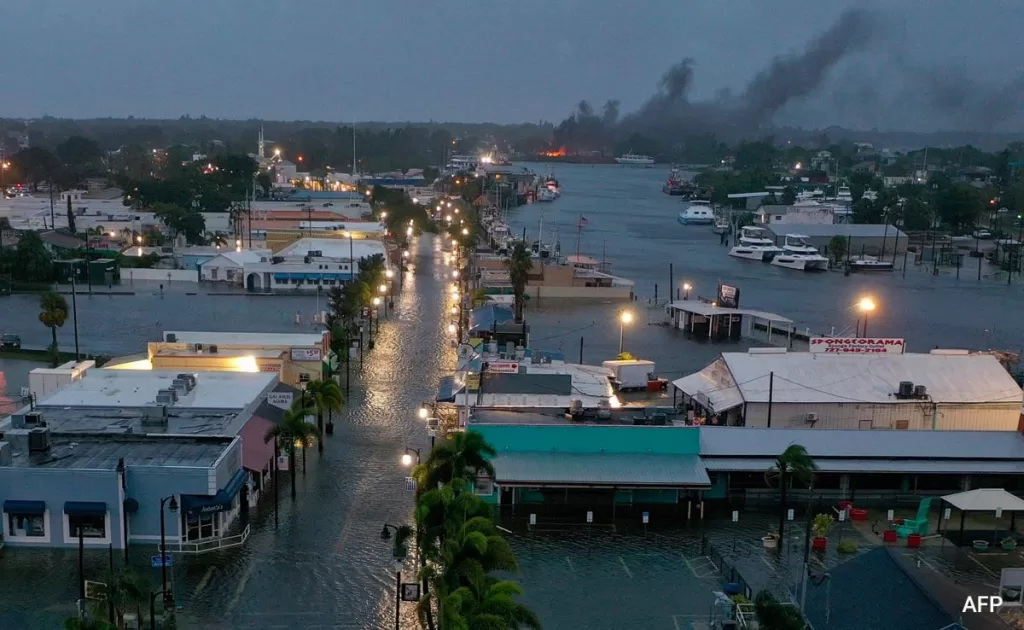FLORIDA-Hurricane Idalia has hit Florida and is now crossing into Georgia, bringing powerful winds and potentially life-threatening conditions. Florida Governor Ron DeSantis says the eye of the storm has now left Florida, leaving 250,000 people without power in its wake.
He says there are no officially confirmed deaths, though US media are citing Florida’s Highway Patrol as saying two drivers died in road accidents during the storm. Florida Governor Ron DeSantis says 16ft (4.8m) storm surges are expected in some areas as fierce winds push seawater inland. Some areas of the state have been hit with flooding as knee-deep water covers roads and inundates towns. Nearly 280,000 people are without power as the storm tears through, and residents are warned to be careful of downed power lines. Following Hurricane Idalia’s landfall on Florida’s Gulf Coast, nearly 264,000 energy customers are in the dark as the storm moves inland. At least 263,964 customers are without power, according to poweroutage.com. The outages continue to be concentrated around the Big Bend region of Florida with outages in Taylor County at more than 81% of customers, Dixie County at more than 78% and Lafayette at more than 76%. Farther inland, in Suwannee County, more than 95% of customers are without power and 80% are dark in Columbia County. In southern Georgia, more than 99% of customers are without power in the small county of Echols, nearly 76% of customers have lost power in Brooks County and Lowndes County is 54% out.
Hurricane Idalia is expanding its impact on the Southeast as the powerful hurricane tracks farther inland. The storm stretched from Central Florida to southern Georgia, around 250 miles, as of Wednesday morning. Hurricane-force winds slammed inland parts of northern Florida near Idalia’s center. Winds gusted to 85 mph in Perry, Florida, which is 45 miles southeast of Tallahassee as Idalia passed nearby and the center is moving into Georgia now. Idalia’s strong winds are not just confined to its center. Tropical storm-force winds span 175 miles, from Tampa and Orlando northward to Jacksonville and into Valdosta, Georgia, where a 67 mph wind gust was reported. The most-damaging wind gusts will expand across more of northern Florida and push into southern Georgia by late Wednesday morning. Winds aren’t the only threat. Water levels along Florida’s Gulf Coast remained at record highs after several feet of storm surge.
More surge is expected along the Atlantic Coast next, in places like Savannah in Georgia, Charleston in South Carolina and Wilmington in North Carolina, as Idalia keeps tracking across the Southeast. Hurricane Idalia is expanding its impact on the Southeast as the powerful hurricane tracks farther inland.
The storm stretched from Central Florida to southern Georgia, around 250 miles, as of Wednesday morning. Hurricane-force winds slammed inland parts of northern Florida near Idalia’s center. Winds gusted to 85 mph in Perry, Florida — which is 45 miles southeast of Tallahassee — as Idalia passed nearby and the center is moving into Georgia now.
Source:https://www.nation.com.pk/31-Aug-2023/hurricane-idalia-slams-into-florida-and-georgia
















